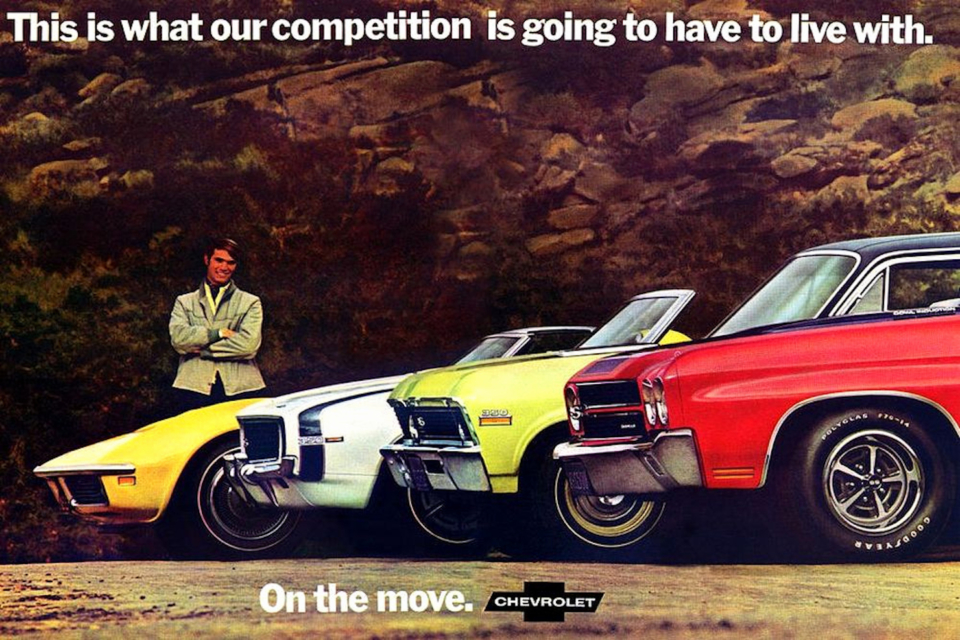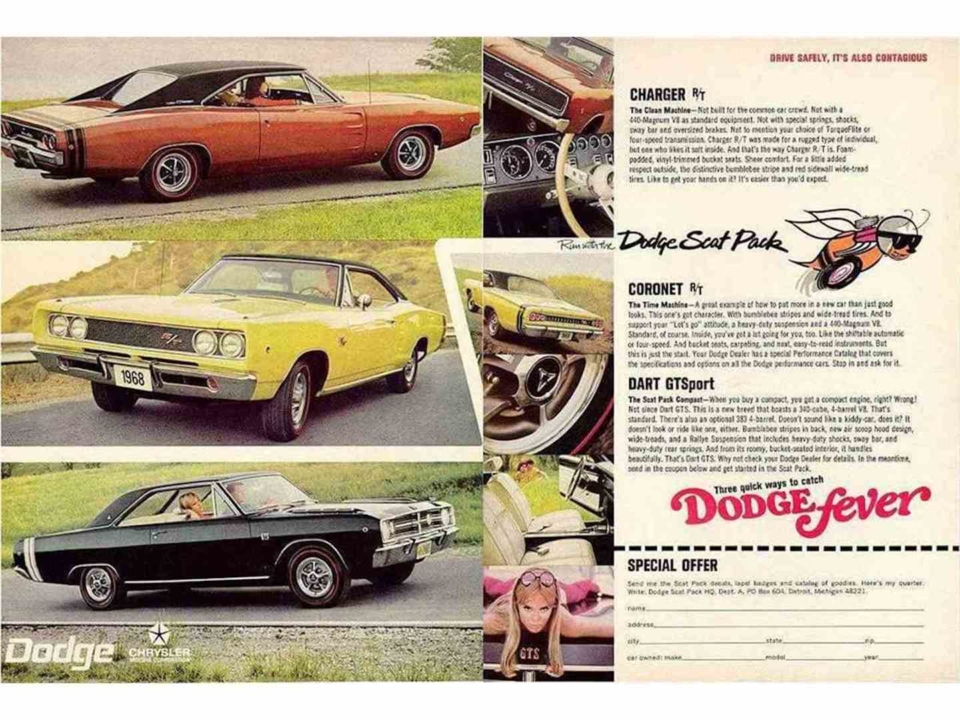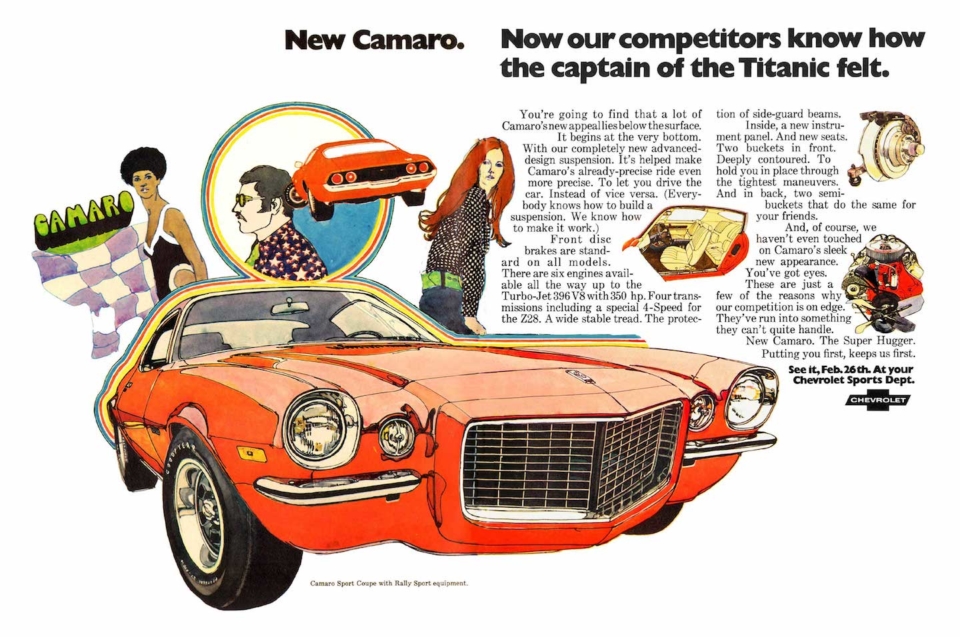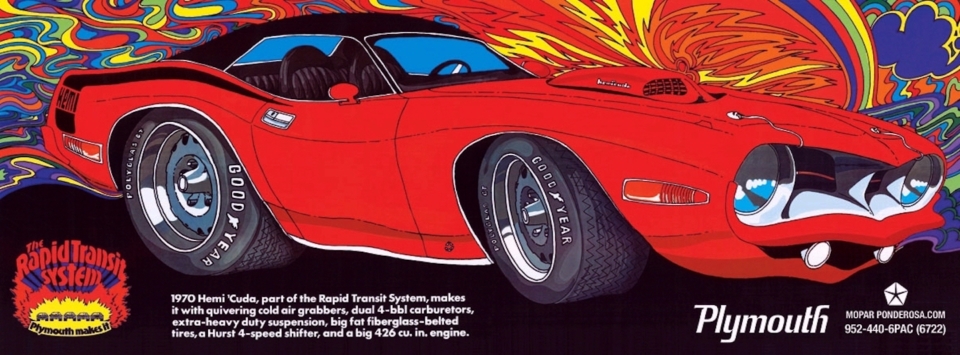
An example of the type of advertising rivalry that the “Big Three” engaged in. Photo from carwall.net.
Not long ago, there were creatures that roamed the streets and strips of America; Guzzling petrol, roaring past pedestrians, and creating all out mayhem. They were called, “Pony cars.” Or, at least that is what auto manufacturers of the day would have had you believe. With names like Mustang, Barracuda, Camaro, and Demon, their purpose was clear.
If their names weren’t enough to evoke a sense of competition, their advertisements sure pushed enthusiasts in the right direction. Brand rivalry is no new concept when it comes to muscle cars, but it had to start somewhere. Pony cars were supposed to be affordable, sporty, performance-oriented machines that were accessible to the every-man. And almost every man had his brand of preference. This was often solidified by performance on the racetrack, reputation on the street, and of course the way manufacturers connected with their customers. They did so by showcasing, not only the out-of-the-box performance their cars offered, but the potential for customization as well.

One of many ads promoting Dodge’s Scat Pack. Photo from classiccars.com
Plymouth and Dodge were well known in the hot-rodding community because of their marketing campaign that targeted customers with performance and customization in mind. They even offered membership to clubs. Specifically, Dodge’s Scat Pack, and Plymouth’s Rapid Transit System.
These advertisements weren’t always as wholesome as a some of their logos, like the Roadrunner, or Superbee would lead you to believe. It was not uncommon for one brand to take a dig at another in some of their adverts. To appeal to such a competitive audience, manufacturers would reference their competitors frequently while making boastful claims about their own horse in the race. Car makers weren’t shy about letting customers know why their car was the best, and ultimately it promoted the culture, and created a marketplace that pushed the envelope.

A good example of Chevy taking shots at the competition. Photo from chevycamarolouisvilleky.com.
The ‘60s and ‘70s brought about a time of peace and love for many young people, and with that, an aesthetic that was as colorful and vibrant as the vehicles they were producing. Manufacturers picked up on that, and tailored their marketing strategy accordingly. Take this ad below for example. The colorful swirls and wild imagery would likely have been more at home in your friend’s basement under a blacklight, than in your father’s office.
The psychedelic imagery in their advertisements often carried over to and from the vehicles themselves, their names, and their logos. Even the color palette being offered on many of the popular muscle cars of the day, was a sign of the times. “Plum Crazy Purple,” anyone?

Dig those wild colors on this advertisement for Plymouth’s Rapid Transit System! Photo from moparponderosa.com.
Before the world knew it, competition was becoming fiercer, engines were getting bigger, new technology was entering the marketplace, and all the while, car enthusiasts were reaping the benefits.
This has carried over into modern muscle cars like the Dodge Challenger, the Ford Mustang, and Chevy’s Camaro, leaving many enthusiasts feeling nostalgic because of the reintroduction of names like, Demon, Superbee, and Bullitt. Should the retro ads and branding be left in the past, or do the manufacturers still know what they’re doing?



